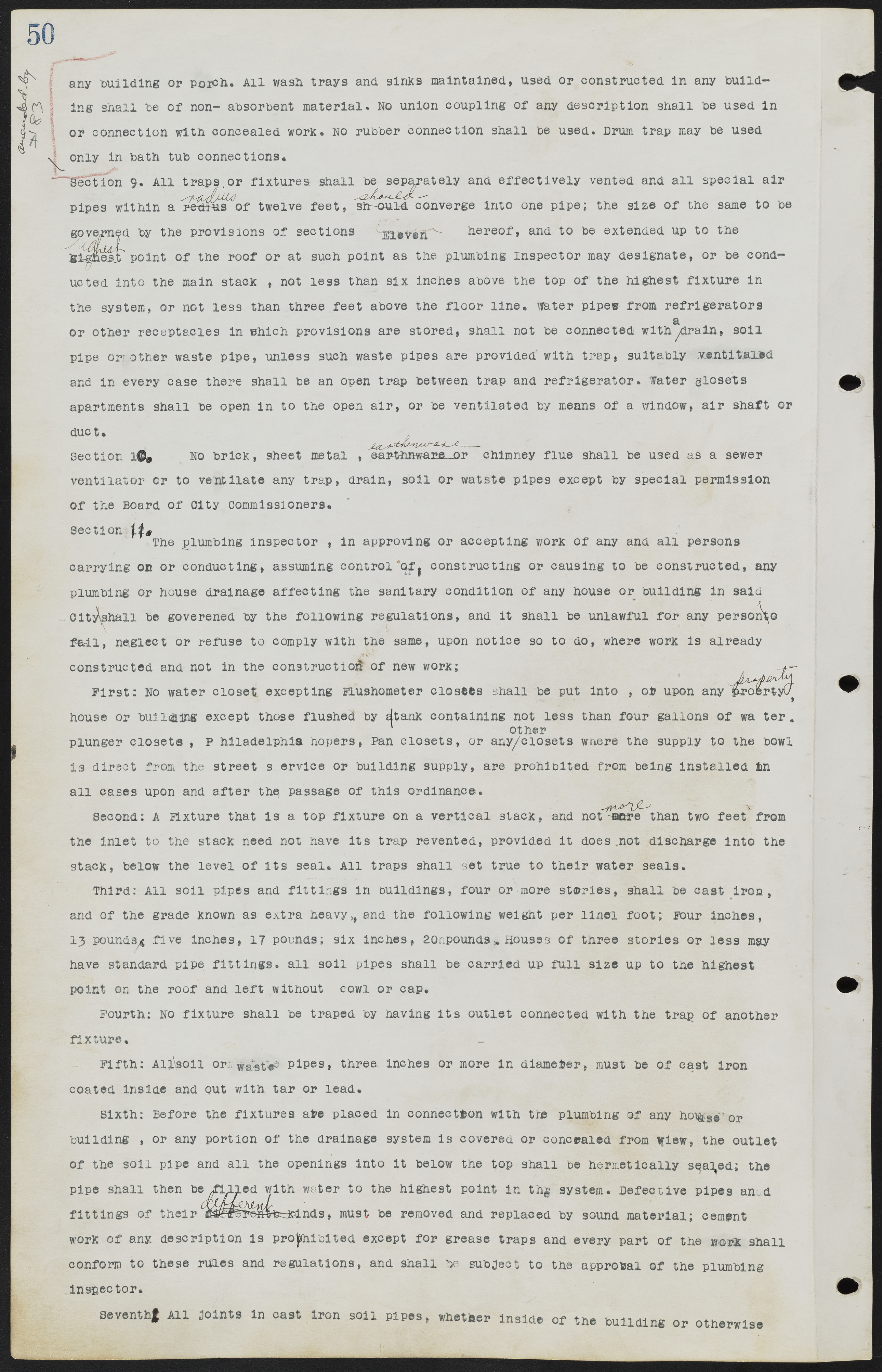Copyright & Fair-use Agreement
UNLV Special Collections provides copies of materials to facilitate private study, scholarship, or research. Material not in the public domain may be used according to fair use of copyrighted materials as defined by copyright law. Please cite us.
Please note that UNLV may not own the copyright to these materials and cannot provide permission to publish or distribute materials when UNLV is not the copyright holder. The user is solely responsible for determining the copyright status of materials and obtaining permission to use material from the copyright holder and for determining whether any permissions relating to any other rights are necessary for the intended use, and for obtaining all required permissions beyond that allowed by fair use.
Read more about our reproduction and use policy.
I agree.Information
Digital ID
Permalink
Details
More Info
Rights
Digital Provenance
Publisher
Transcription
any building or porch. All wash trays and sinks maintained, used or constructed in any building shall be of non-absorbent material. No union coupling of any description shall be used in or connection with concealed work. No rubber connection shall be used. Drum trap may be used only in bath tub connections. Section 9. All traps or fixtures shall be separately and effectively vented and all special air pipes within a radius of twelve feet, should converge into one pipe; the size of the same to be governed by the provisions of sections Eleven hereof, and to be extended up to the highest point of the roof or at such point as the plumbing inspector may designate, or be conducted into the main stack, not less than six inches above the top of the highest fixture in the system, or not less than three feet above the floor line, water pipes from refrigerators or other receptacles in which provisions are stored, shall not be connected with a drain, soil pipe or other waste pipe, unless such waste pipes are provided with trap, suitably ventilated and in every case there shall be an open trap between trap and refrigerator. Water closets apartments shall be open in to the open air, or be ventilated by means of a window, air shaft or duct. Section 10. No brick, sheet metal, earthenware or chimney flue shall be used as a sewer ventilator or to ventilate any trap, drain, soil or waste pipes except by special permission of the Board of City Commissioners. Section 11. The plumbing inspector, in approving or accepting work of any and all persons carrying on or conducting, assuming controlconstructing or causing to be constructed, any plumbing or house drainage affecting the sanitary condition of any house or building in said City shall be governed by the following regulations, and it shall be unlawful for any person to fail, neglect or refuse to comply with the same, upon notice so to do, where work is already constructed and not in the construction of new work; Flushometer closets shall be put into, or upon any property, house or building except those flushed by a tank containing not less than four gallons of water. plunger closets, Philadelphia hopers, Pan closets, or any other closets where the supply to the bowl is direct from the street service or building supply, are prohibited from being installed in all cases upon and after the passage of this ordinance. Second: A Fixture that is a top fixture on a vertical stack, and not more than two feet from the inlet to the stack need not have its trap re-vented, provided it does not discharge into the stack, below the level of its seal. All traps shall set true to their water seals. Third: All soil pipes and fittings in buildings, four or more stories, shall be cast iron, and of the grade known as extra heavy, and the following weight per linear foot; Four inches, 13 pounds, five inches, 17 pounds; six inches, 20 pounds. Houses of three stories or less may have standard pipe fittings, all soil pipes shall be carried up full size up to the highest point on the roof and left without cowl or cap. Fourth: No fixture shall be trapped by having its outlet connected with the trap of another fixture. Fifth: All soil or waste pipes, three inches or more in diameter, must be of cast iron coated inside and out with tar or lead. Sixth: Before the fixtures are placed in connection with the plumbing of any house or building, or any portion of the drainage system is covered or concealed from view, the outlet of the soil pipe and all the openings into it below the top shall be hermetically sealed; the pipe shall then be filled with water to the highest point in the system. Defective pipes and fittings of their different kinds, must be removed and replaced by sound material; cement work of any description is prohibited except for grease traps and every part of the work shall conform to these rules and regulations, and shall be subject to the approval of the plumbing inspector. Seventh. All joints in cast iron soil pipes, whether inside of the building or otherwise

